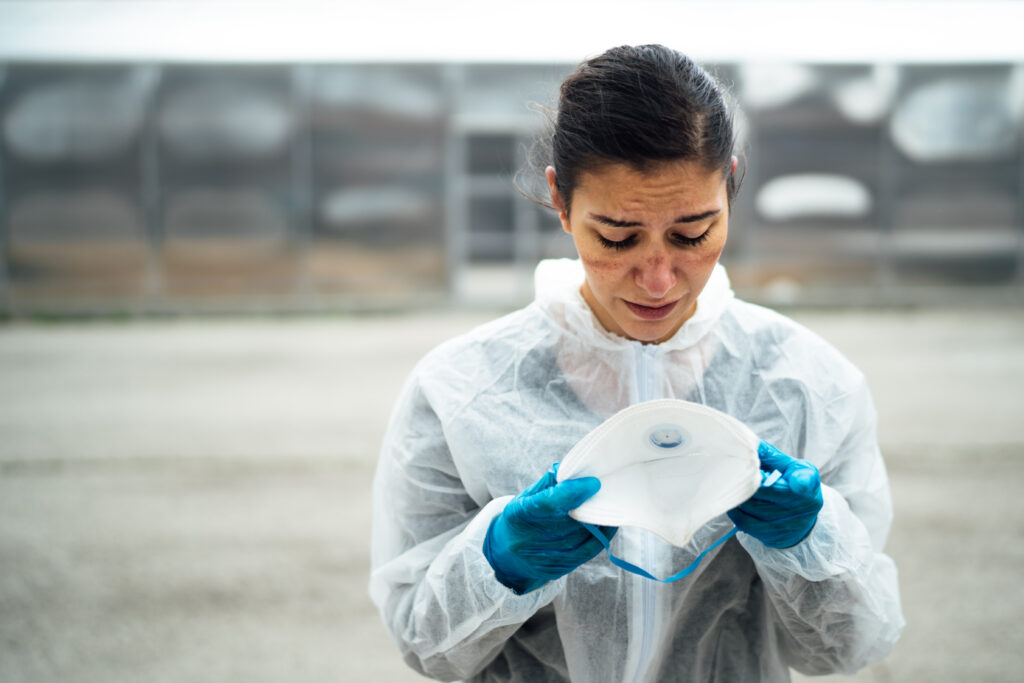Understanding the Second Victim impact can help clinicians heal after trauma
Susan Scott’s research can help organizations aid their caregivers in navigating the emotional trauma after adverse patient events.

University of Missouri healthcare nurse scientist Dr. Susan D. Scott is among the most frequently cited researchers of the second victim phenomenon in healthcare. But when she first started her professional career, the "scientist" title was not one she imagined for herself.
"I just wanted to be a nurse," she recalls of her earliest ambitions. "After years at the bedside and having held various leadership roles, I was offered a patient safety role, and I was so excited to talk to people who had experienced an adverse event and were impacted by the experience."
Part of that excitement came from personal experience. Soon after graduating with her nursing degree, she found herself caring for a small child who had been accidentally shot in the left shoulder.
As their young patient arrived, Scott and her preceptor had the emergency room prepared. The child was minimally responsive while breathing on her own. But as the patient was transferred to the ER gurney, large amounts of blood began pouring from the small chest wound. Almost immediately, the girl was in cardiac arrest.
Scott initiated chest compressions for the first time on an actual patient. This skill was more challenging than the simulation experiences she had easily mastered. She focused on maintaining steady chest strokes despite the blood that covered the chest. When the patient’s name was revealed, a stark realization overcame the entire team – their patient was the child of someone they knew.
After unsuccessful resuscitation efforts, the patient was pronounced dead. After her paperwork was completed, Scott reached out to her preceptor to discuss the raw emotional feelings she was experiencing and was told, “Welcome to nursing, Honey. You have to buck up.”
Thus, before she was ever introduced to the concept intellectually, Scott embodied a deep understanding of the potentially harmful impact of the "second victim" phenomenon in healthcare.
Second victims
The term, first coined by Albert W. Wu, identifies "healthcare providers who are involved in an unanticipated adverse patient event, medical error or a patient-related injury and become victimized in the sense that the provider is traumatized by the event."
In one of her early experiences in her patient safety role, Scott interviewed a colleague who had experienced an adverse clinical outcome. The physician recounted — in graphic detail — the events that led up to the procedure, the incident itself, what it was like and what could be done to avoid a similar outcome in the future. "She had done everything right," Scott said, including dealing with the aftermath — speaking with the family, with colleagues and even taking the medical student who was present out to lunch to enable her to talk through the experience.
It seemed like a textbook debrief, Scott said. "And then at the very end, I just asked how she was doing," she explained. She looked up at me, sobbing, and said, ‘I think I'm going to take a job as a greeter at Walmart. I can’t mess that up!’ "
"I knew she was hurting deeply," she said. "But I didn't know what to say."
Knowing what to say to second victims — how to support and help them deal with what Scott calls the "emotional work" that follows adverse outcomes and medical errors — became the focal point of her subsequent research. Since she began writing about the natural history of the phenomenon, Scott's research indicates that as many as two-thirds of clinicians affected by an unexpected adverse outcome "indicated that they did not receive support from anyone within the health care community after the adverse clinical event." More than one in three clinicians reported being told explicitly to avoid discussing the event.
Although she's learned that every clinician and every institution respond to these kinds of events uniquely, the research shows some factors that second victims share. Scott says they tend to:
The six-stage trajectory
After a decade of research, much of it emerging from the MUHC's forYOU program, which provides support for second victims, Scott and her colleagues have identified the phenomenon’s six-stage trajectory.
She notes that not every second victim experiences all of these stages, nor proceeds through them in the same sequence. But after dozens of interviews, this framework has emerged.
The first three stages represent "impact realization." In the first stage — chaos and accident response — clinicians realize that an error or event has occurred. In the process of trying to get help or stabilize the patient, they may experience a wave of emotions that distract them or prevent them from continuing to provide care.
In the second stage — labeled intrusive reflections — second victims begin to continually re-evaluate the scenario, with some self-isolating and reporting feeling inadequate or haunted by re-enactments of the event. In the third stage — restoring personal integrity — these clinicians focus on concerns such as workplace acceptance and gossip management. Fear is prevalent, embodied in questions such as "What will others think?" or "Will I ever be a trusted member of this team again?"
Scott's model labels the fourth stage as "enduring the inquisition." It's here when the realization of seriousness occurs and the second victims have to reiterate the case scenario and respond to the "whys" about the event to numerous individuals. It's also when concerns about legal actions, sanctions or loss of license arise.
The road to recovery takes an important turn at Stage 5, "obtaining emotional first aid." Scott says many second victims don't realize what's happening to them, often thinking they are alone in these reactions and frequently express concerns that they are experiencing a psychological breakdown. "If they knew predictively that these events can and do happen, they are better able to deal with them," she said. Awareness of the phenomenon is truly the first intervention. During this stage, some begin to seek personal and professional support, while others aren’t sure where to turn.
Stage 6 — "moving on" — leads to one of three paths the clinician could take: dropping out, surviving or thriving. Those who drop out frequently transfer to a different unit or facility, sometimes quitting the profession altogether. The survivors find a way to cope with the experience but have difficulty integrating it into their personal and professional lives.
They continue to experience intrusive thoughts and persistent sadness. The third group, the thrivers, emerge from the experience with new insights and perspectives, often becoming advocates for patient safety initiatives. They reach an understanding that one event does not define their work or practice and search for ways to learn and improve, experiencing a form of post-traumatic growth.
Based on this model, healthcare systems are creating programs like MUHC's forYou team, a group of clinicians selected and trained in crisis support and stress management. Depending on the second victim's needs, they can provide emotional first aid, one-to-one peer support and a safe zone where employees can express their emotions and thoughts.
Scott says the creation of these programs has accelerated since the COVID-19 pandemic, as administrators learned just how important employee wellness and well-being are when providing patient care. As for her own journey, Scott says the most important lesson she's learned is to ask the last question first.
"Don't end a conversation about these things with 'Are you okay'?" she explains. "That's the question to start with."
Originally published by ICD Healthcare on May 4, 2023.
ICD is dedicated to making an impact on healthcare by fostering collaboration at industry conferences. ICD aims to unite industry leaders, experts, and practitioners worldwide to address pressing healthcare challenges and opportunities. Join us on the journey at www.icdevents.com.
